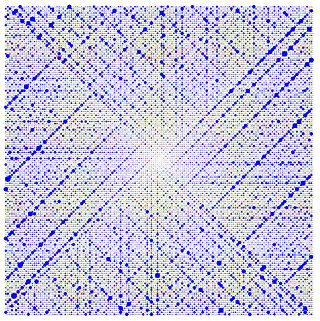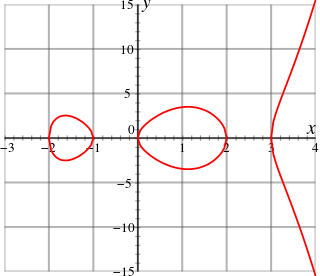
Number theory is a branch of pure mathematics devoted primarily to the study of the integers and arithmetic functions. German mathematician Carl Friedrich Gauss (1777–1855) said, "Mathematics is the queen of the sciences—and number theory is the queen of mathematics." Number theorists study prime numbers as well as the properties of mathematical objects constructed from integers, or defined as generalizations of the integers.
In the mathematical field of complex analysis, elliptic functions are special kinds of meromorphic functions, that satisfy two periodicity conditions. They are named elliptic functions because they come from elliptic integrals. Those integrals are in turn named elliptic because they first were encountered for the calculation of the arc length of an ellipse.

Carl Gustav Jacob Jacobi was a German mathematician who made fundamental contributions to elliptic functions, dynamics, differential equations, determinants, and number theory.

In mathematics, particularly in algebraic geometry, complex analysis and algebraic number theory, an abelian variety is a projective algebraic variety that is also an algebraic group, i.e., has a group law that can be defined by regular functions. Abelian varieties are at the same time among the most studied objects in algebraic geometry and indispensable tools for research on other topics in algebraic geometry and number theory.
In mathematics, the arithmetic of abelian varieties is the study of the number theory of an abelian variety, or a family of abelian varieties. It goes back to the studies of Pierre de Fermat on what are now recognized as elliptic curves; and has become a very substantial area of arithmetic geometry both in terms of results and conjectures. Most of these can be posed for an abelian variety A over a number field K; or more generally.
In mathematics, the Jacobian varietyJ(C) of a non-singular algebraic curve C of genus g is the moduli space of degree 0 line bundles. It is the connected component of the identity in the Picard group of C, hence an abelian variety.
In mathematics, Diophantine geometry is the study of Diophantine equations by means of powerful methods in algebraic geometry. By the 20th century it became clear for some mathematicians that methods of algebraic geometry are ideal tools to study these equations. Diophantine geometry is part of the broader field of arithmetic geometry.
In mathematics, an abelian integral, named after the Norwegian mathematician Niels Henrik Abel, is an integral in the complex plane of the form
In mathematics, differential of the first kind is a traditional term used in the theories of Riemann surfaces and algebraic curves, for everywhere-regular differential 1-forms. Given a complex manifold M, a differential of the first kind ω is therefore the same thing as a 1-form that is everywhere holomorphic; on an algebraic variety V that is non-singular it would be a global section of the coherent sheaf Ω1 of Kähler differentials. In either case the definition has its origins in the theory of abelian integrals.

In mathematics, arithmetic geometry is roughly the application of techniques from algebraic geometry to problems in number theory. Arithmetic geometry is centered around Diophantine geometry, the study of rational points of algebraic varieties.
This is a glossary of arithmetic and diophantine geometry in mathematics, areas growing out of the traditional study of Diophantine equations to encompass large parts of number theory and algebraic geometry. Much of the theory is in the form of proposed conjectures, which can be related at various levels of generality.
In mathematics, the Schottky problem, named after Friedrich Schottky, is a classical question of algebraic geometry, asking for a characterisation of Jacobian varieties amongst abelian varieties.

Martin Maximilian Emil Eichler was a German number theorist.
In mathematics, the concept of abelian variety is the higher-dimensional generalization of the elliptic curve. The equations defining abelian varieties are a topic of study because every abelian variety is a projective variety. In dimension d ≥ 2, however, it is no longer as straightforward to discuss such equations.
The study of manifolds combines many important areas of mathematics: it generalizes concepts such as curves and surfaces as well as ideas from linear algebra and topology. Certain special classes of manifolds also have additional algebraic structure; they may behave like groups, for instance. In that case, they are called Lie Groups. Alternatively, they may be described by polynomial equations, in which case they are called algebraic varieties, and if they additionally carry a group structure, they are called algebraic groups.
This page is based on this
Wikipedia article Text is available under the
CC BY-SA 4.0 license; additional terms may apply.
Images, videos and audio are available under their respective licenses.





